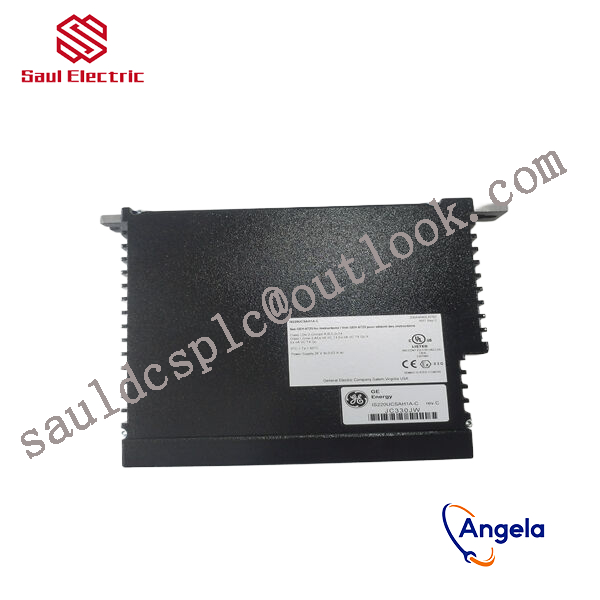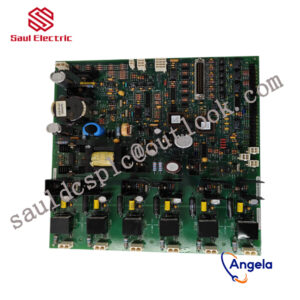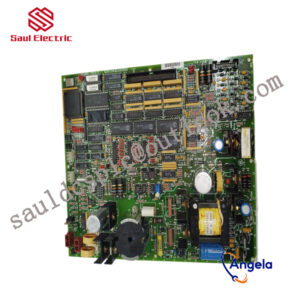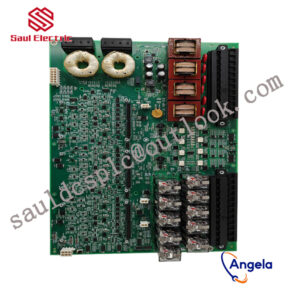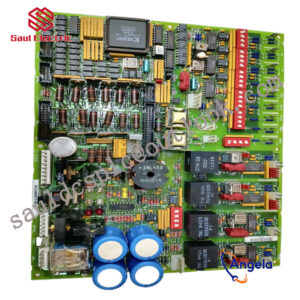Description
IS200EPCTG1AAA Product Introduction
The specific application scope of the product
will depend on the needs of system integration and industrial application, but generally speaking, this type of embedded controller module can be applied to the following categories:
manufacturing processes, etc.
monitoring and control system.
of the controller module, as well as the specific needs of the customer.
designed to manage gas or steam turbines.
It has a CIMPLICITY graphical interface and an HMI with software suitable for running heavy-duty turbines.
be installed at the bottom of the cabinet. For a small setup that is easy to serve a triple redundant system, up to three components can be installed side by side.
he board can operate within a temperature range of 0 to 65 degrees Celsius without the need for a fan for cooling. NFPA Class 1. This board can be used for two applications.
(1) Use STEP7V5.2 configuration software and enter Hardware Configure to complete S7-300 PLC hardware configuration;(2) Select S7-315-2DP as the main station system, import the GSD (device database) file of NPBA-12 into the STEP7 programming environment, and configure the software to configure NPBA-12 with S7-315-2DP as the main station. DP online, and select the PPO type to use. This design uses PPO4 to set the site network address. In the Profibus structure of the variable frequency drive device, ABB frequency converters use the Profibus-DP communication module (NPBA-12) for data transmission, which is mainly periodic: the host reads the input information from the slave station and sends the output information back to the slave station. , so it is necessary to call two system function blocks SFC14 and SFC15 in the PLC main program to read and write these data to achieve communication control to the frequency converter;(3) Create a data block in the main PLC program for data communication with the frequency converter; establish a variable table for observing the real-time communication effect.4 Inverter operation settingsAfter the frequency converter and PLC are connected to a network using Profibus-DP fieldbus, in addition to programming in the PLC automation system, appropriate parameter settings must also be performed on each frequency converter.After the communication cable is connected, start the inverter and complete the setting of the inverter communication parameters.4.1 Basic settings(1) 51.01—Module type, this parameter displays the module model detected by the transmission device. Its parameter value cannot be adjusted by the user. If this parameter is not defined, communication between the module and the drive cannot be established.(2) 51.02—This parameter selects the communication protocol, “0” selects the Profibus-DP communication protocol.(3) 51.03—This parameter is ProfibuThe PPO type selected by s connection, “3” is PPO4, but the PPO type on the inverter should be consistent with the PPO type configured on the PLC.(4) 51.04—This parameter is used to define the device address number, that is, the site address of the frequency converter. Each device on the Profibus connection must have a separate address. In this design, the two frequency converters are stations 2 and 3 respectively. [1]4.2 Connection of process parametersThe process parameter interconnection completes the definition and connection of the corresponding parameters of the NPBA-12 dual-port RAM connector and the frequency converter, including the connection from the master station (PLC) to the frequency converter and the connection from the frequency converter to the master station (PLC). Set the following connection parameters on the frequency converter.(1) PZD value sent from PLC to transmission inverterPZD1—control word, such as start enable, stop, emergency stop and other control commands of the frequency converter;PZD2—frequency setting value of the inverter.(2) PZD value sent from the transmission inverter to the PLCPZD1—status word, such as alarm, fault and other inverter operating status;PZD2—actual speed value, current actual value, etc. of the frequency converter.5 ConclusionAfter the inverter control system adopts the Profibus-DP fieldbus control mode, the entire system not only has strong reliability and is easy to operate, but also can be flexibly modified according to process needs. After this system was applied in Jigang Baode Color Plate Co., Ltd., it has been running well and has provided a successful example for the future automation equipment (network communication of different manufacturers) of the head office.New technology from Swiss ABB Group: Complete car charging in 15 secondsThis technology can charge a car in 15 seconds The Swiss ABB Group has developed a new electric bus technology that can complete vehicle charging in 15 seconds . No other company”s battery technology can achieve this performance.ABB has developed a technology called “Flash Charging” that allows an electric bus with 135 passengers to charge at charging points along the route. The charging point has a charging power of 400 kilowatts and is located above the vehicle. The charging point is connected to a moving arm controlled by a laser and can charge the car battery in 15 seconds. Its minimal design will help protect the urban environment and surrounding landscape.The idea behind this design is to give the electric bus enough power to travel to the next charging station after one charge. The end of the line will allow for long periods of full charging, with the car able to travel longer distances on a full charge. In addition to faster charging times, the system uses a carbon-emission-free solution called TOSA to obtain electricity from clean hydroelectric power stations.ABB initially plans to use this technology between Geneva Airport and the Palexpo International Convention and Exhibition Center. If the test is successful, it will be deployed to public transportation systems. This is more cost effective and environmentally friendly.ABB Executive Chief Technology Officer Claes Rytoft said: “With flash charging, we can trial a new generation of electric buses for large-scale transportation in cities. This project will provide greater flexibility, cost-effectiveness and flexibility.” Paving the way for a lower public transport system while reducing pollution and noise.”
IS215VCMIH2B Processor/Controller Mark VI System
IS200TRPGH3B I/O excitation redundant module GE
IS215ACLEH1B GE power control board
IS200VCCCH1B Gas turbine system Mark VI
IS200TGENH1A Gas turbine system Mark VI
DS200SDCCG5AHD GE power control board
IS200EROCH1AD I/O excitation redundant module GE
IS420UCECH1B From General Electric in the United States
IS220PAICH1A From General Electric in the United States
IS415UCVHH1A From General Electric in the United States
IS200WETAH1ADC High performance processor module GE
DS200ACNAG1ADD From General Electric in the United States
IS200DSFCG1AEB From General Electric in the United States
IS210AEBIH1BED GE power control board
IS220PSVOH1B Processor/Controller Mark VI System
IS200VCCCH1B From General Electric in the United States
IS200EGPAG1B I/O excitation redundant module GE
IS215UCVGH1A I/O excitation redundant module GE
IS215VCMIH2C Processor/Controller Mark VI System
IS220PAISAH1A Gas turbine system Mark VI
IS215UCVFH2A GE power control board
IS210BPPBH2BMD From General Electric in the United States
IS220PDOAH1A Processor/Controller Mark VI System
IS200TDBTH6ACD Processor/Controller Mark VI System
IS200DVIBH1B I/O excitation redundant module GE
IS420UCSCS2A I/O excitation redundant module GE
IS230PCAAH1B Gas turbine system Mark VI
DS200TBCAG1AAB High performance processor module GE
IS230STCIH6A Processor/Controller Mark VI System
IS200DSPXH1B Gas turbine system Mark VI
IS215VCMIH2BE High performance processor module GE
IS215VCMIH2C I/O excitation redundant module GE
DS200TCDAH1BJE GE power control board
IS210AEBIH1A From General Electric in the United States
IS420ESWBH3A High performance processor module GE
DS200RCTBG1ABA Processor/Controller Mark VI System
IS420UCSCS2A-B GE power control board
IS220PDIOH1A GE power control board
DS200FCGDH1B High performance processor module GE
IS220PAICH1 From General Electric in the United States
IS200TRPGH1B From General Electric in the United States
IS200ACLEH1BCB GE power control board
IS200ERRRH1A From General Electric in the United States
IS420ESWBH2A GE power control board
IS230TVBAH4A Processor/Controller Mark VI System
IS200TRLYH1C I/O excitation redundant module GE
IS410TVBAS2B I/O excitation redundant module GE
DS200DCFBG1B From General Electric in the United States
IS200EXHSG3A Gas turbine system Mark VI
IS200TDBTH6ACD High performance processor module GE
IS200DSPXH2CAA Gas turbine system Mark VI
DS200VPBLG2A From General Electric in the United States
IS200TVIBH2BBB Processor/Controller Mark VI System
IS200TSVOH1BCC Processor/Controller Mark VI System
IS200VAOCH1B GE power control board
IS200EPSMG1AED From General Electric in the United States
IS200EPCTG1A GE power control board
IS200VRTDH1D GE power control board
IS215UCVEM06A GE power control board
DS200DCFBG1BGB I/O excitation redundant module GE
IS200WROBH1A Processor/Controller Mark VI System
DS200SDCCG4AFD I/O excitation redundant module GE
DS200RTBAG3AHC Processor/Controller Mark VI System
IS200AEAAH1CPR1 I/O excitation redundant module GE
IS220UCSAH1A Processor/Controller Mark VI System
IS410STAIS2A High performance processor module GE
IS420UCSCH1B GE power control board
IS200AVIFH1A GE power control board
IS200VAICH1DAA Gas turbine system Mark VI
IS200STCIH6A GE power control board
IS210AEBIH1A GE power control board
IS200ICBDH1A GE power control board

